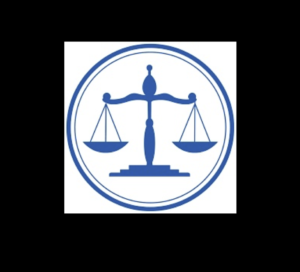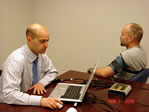How accurate is a polygraph?
U.S. Government studies have concluded that when a qualified examiner conducts the test properly, the polygraph exam is between 87 and 95 percent accurate. It is the most accurate means available for determining the truth or deception of a person answering a direct question.
What does the test consist of?
The polygraph examiner receives and reviews the facts of the case. The examiner formulates the specific test questions based upon the facts of the case and the examinee’s version of the events.
The examiner explains the test process to the examinee and reviews the facts of the case during the pretest interview. At this time the examiner reads each question to the examinee to make sure each one is easily understood.
If at any time or for any reason, the examinee feels uncomfortable with the examiner, the examination should be stopped. Arrangements should be made for another examiner to conduct the test at another time.
The examinee is attached to the polygraph instrument and given additional instructions.
The questions are read to the examinee three times while they are attached to the polygraph instrument using sensors that measure blood pressure, heart rate, breathing and sweat gland activity. These measurements are charted on graphs or stored in the memory of computerized polygraph units.
Upon completion of the questions, the examiner will analyze the charts and numerically score the charts to make sure that his analysis is within the acceptable limits of the instrument. This score results in a conclusion that the examinee has answered either truth, deception or is determined to be inconclusive.
The examiner will transmit the test results to the client verbally as soon as is practical. A written report will be provided if requested.
NOTE: Polygraph exams are conducted in private. No other persons are allowed in the examination room during the test. Exceptions may be made if an examinee requires an interpreter. Most reputable examiners videotape the examination for the protection of all parties involved.
What is measured by a polygraph?
A standard polygraph records changes in physiological signs. These signs include blood pressure, heart rate, breathing, and sweat gland activity (galvanic skin reflex).
It does not matter that the examinee is nervous during testing; some nervousness is to be expected. The polygraph records significant changes from the examinee’s baseline or normal reading when specific questions are asked.
An examinee intending deception when answering a particular question activates their sympathetic nervous system when that question is asked. This will cause identifiable changes in one or more of the physical responses that is measured by the polygraph.
What kind of questions can be asked?
All test questions must be limited to “yes” or “no” answers. The test questions must have definite objective answers and may not be opinions. The test questions must relate to past events of a factual nature. The wording of the questions must only have one interpretation.
There are never any questions pertaining to religion or politics.
There will be no questions pertaining to sexual subject matter during either the interview or polygraph examination unless such subject matter is relevant or necessary to conduct the investigation.
An example of a “good” and “bad” question:
Bad – “Did you ever cheat on your husband?”
Good – “Since you married Jim, have you had sexual intercourse with anyone other than Jim?”
Questions in the same test must be related to one another. The examiner can ask about drug use and alcohol use in the same examination, but not ask about drug use and extramarital sex in the same test. Distinctly separate types of issues require separate examinations.
How many questions can be asked?
An examiner can usually cover three (3) relevant questions during an exam. This assumes these questions are related to one another (see the question above). It takes about 90 minutes to cover these three questions effectively. If it is necessary to ask more questions, another exam must be designed and conducted, usually at a later time. This will add to the time and cost involved. Test results are usually less reliable with an increase in the number of relevant test questions. A healthy individual can only produce readable polygraph charts for a limited period of time; after this time has passed it is impossible to generate a conclusive polygraph test. Any further testing would need to be scheduled for a different day.
Are special examiners needed for sex crimes?
There is a new certification for examiners called “Certified Post-Conviction Sex Offender Examiner.” This certification requires 40 hours of additional training. If the exam you need involves an allegation of a sex crime, it would be wise to choose an examiner with this additional training and certification.
Can someone under age 18 take a polygraph?
Yes, but the examiner must first have written consent of a parent or guardian. However, most examiners will not test anyone less than 14 years of age barring extraordinary circumstances.
Is the polygraph admissible in court?
Each jurisdiction must be checked to determine admissibility standards; some courts allow the introduction of polygraph evidence while others have not. In most cases, polygraph evidence is used during pre-trial investigation and preparations rather than during the actual trial.
In the O. J. Simpson civil trial, the results of a polygraph were admitted into evidence. This established a precedent across the nation allowing polygraph examinations in civil trials such as divorce cases.
Can someone beat the polygraph?
While an honest person that has done nothing wrong has no reason to try, some people will try to beat the test.
The polygraph works by recording changes caused by a person’s sympathetic nervous system. This is the part of the nervous system that makes your heart beat and causes you to breathe, it can only be consciously controlled very slightly. Attempts to control breathing or heart rate are usually picked up by the trained examiners. A dishonest person might try to affect the outcome of their examination by using drugs or other countermeasures in an attempt to mask the changes caused by their sympathetic nervous system when they answer a question untruthfully.
A person that is under a physician’s care should continue to take their medication as prescribed. Failure to follow the prescribed regimen of any medication could cause a metabolic imbalance and have potentially serious medical consequences for the examinee. Prescription medications taken as prescribed should not normally affect the outcome of a polygraph examination. If drugs or alcohol impairs an examinee at the time of their test, it is usually obvious to the examiner.
Attempts to beat the test using medications use of diazepam (Valium) or methylphenidate (Ritalin) are usually unsuccessful. A study published in 1983 showed that the accuracy rate actually IMPROVED in examinees taking these medications before the test. If the use of drugs is suspected, a pre-test (or post-test) drug screening is advised. While the use of certain drugs and medications may affect the exam, such use generally results in an “inconclusive” test rather than changing the result from deceptive to truthful.
The use of hypnotically induced amnesia to defeat a polygraph examination was the subject of a study published in 1945. While the subjects in this study showed complete posthypnotic amnesia for certain learned words, they recognized the words at the unconscious level.
Some examinees will attempt to defeat the test by inflicting pain on themselves, excessive movement or controlling their breathing. Use of a motion detection chair will identify many of these attempts. The examinee’s fear of detection in answering relevant questions will usually create more measurable responses than self-inflicted pain during the other questions.
It is virtually impossible to change a result from “deceptive” to “truthful” through the use of drugs, medications or other countermeasures prior to an exam. This can be demonstrated through verified accuracy rates as high as 95%.
Aren’t there some books on trying to beat the polygraph?
There are books claiming to tell how to beat the polygraph. Some of the books recommend using medications, drugs, hypnosis or self-inflicted pain in an attempt to beat the test. These countermeasures have been proven ineffective.
One of these books was written by a man that administered over 6,000 tests as part of his job as a police officer. In thousands of tests, he rendered a decision on the truthfulness or deception of the examinee. His decisions affected the employment and the freedom of thousands of people. Now he claims the tests are inaccurate and are not capable of determining truthfulness or deception.
Was he telling the truth then? Or is he telling the truth now?
Can an employer require an employee take to the test?
Yes, under certain conditions.
The Employee Polygraph Protection Act of 1988 requires
1) That the employer has suffered a specific economic loss of money or merchandise and the loss has been reported to the appropriate authorities.
2) That the employee to be tested had access to the missing property or loss.
3) And that the employee is suspected of involvement in the missing property or loss beyond mere access.
If these conditions exist and the employer desires to have an employee tested, the employer must make the request in writing. This form can be downloaded from our website and must be printed on the employer’s letterhead. This request must advise the employee that the exam is voluntary and that no action can be taken against him/her solely for refusing to take it.
The employee must also be advised of the incident under investigation, his/her legal rights, and a number of other notifications required under the law. This request must be presented to the employee at least 2 business days prior to the scheduled exam.
Questions must be limited to the specific loss only. The examiner is not permitted to ask questions about losses other than those listed in the notification form.
If an employee “fails” a polygraph under these conditions, the employer still may not take action against the employee without additional supporting evidence indicating the employee’s involvement in the loss.
Exemptions granted by The Employee Polygraph Protection Act of 1988 allow pre-employment polygraph examinations for employees of banks, hospitals, nursing homes, drug warehouses, armored car companies and law enforcement agencies. If you have questions about pre-employment polygraph screening for your employees, please contact us.
What should I look for when hiring a polygraph examiner?
The rapport between the examiner and examinee is paramount in conducting an effective polygraph examination. If at any time or for any reason, the examinee feels uncomfortable with the examiner, the examination should be stopped. Arrangements should be made for another examiner to conduct the test at another time.
Most importantly, if your state requires licensing, make sure the examiner has a current license.
Every examiner must attend a polygraph-training program, which lasts 7 to 8 weeks. Upon completion of this training the examiner must conduct a certain number of exams under the guidance of an experienced examiner. After this internship period, the school reviews the examiner’s work and grants the certification if this work was done to their standards.
Most examiners complete a certain amount of continuing education or advanced training programs. As technology changes, examiners must keep up with new techniques and equipment.
Look for an examiner with professional affiliations and memberships, such as the American Polygraph Association or other professional organizations that set standards for examiners.
Last, you want to be sure that the examiner you choose has experience in the type of situation you are testing for. Someone that has spent all their time doing tests for retail theft and white-collar crimes might not be the best choice to test a sex offender.







